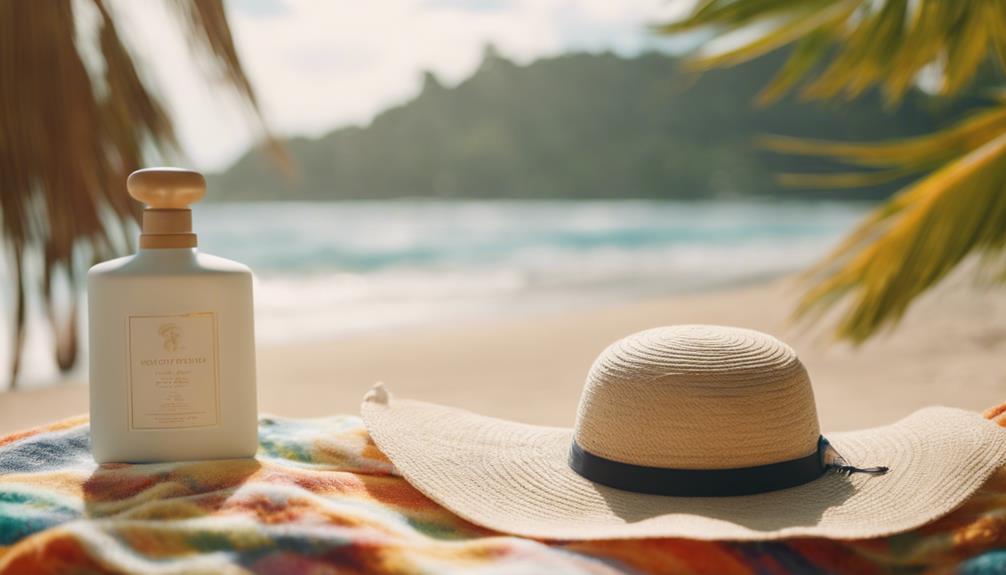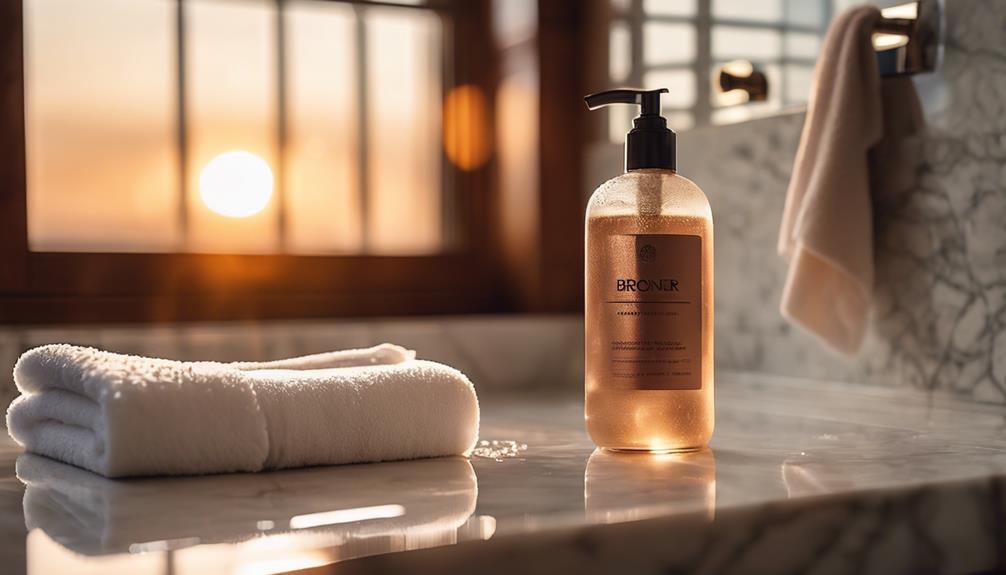Discover the allure of European tanning techniques that blend art with health-conscious practices. You'll find methods like spray tans and self-tanners ideal for achieving that sun-kissed glow without the harmful effects of UV exposure. European approaches emphasize safety, using high-quality products made for a range of skin tones. Plus, they focus on aftercare, ensuring your tan remains vibrant and even. Regular moisturizer and gentle exfoliation play key roles too. This sophisticated approach not only enhances your look but also aligns with modern wellness trends. Stick around, and you'll uncover more about the innovative ways to achieve your desired tan.
Key Takeaways
- European tanning techniques prioritize minimizing UV exposure while achieving a natural, even glow for healthier skin.
- Customized tanning products cater to diverse skin tones, allowing for personalized results that enhance individual beauty.
- Emphasis on safety and health in European tanning practices reflects a growing awareness of skin risks associated with excessive sun exposure.
- Innovative eco-friendly tanning solutions are emerging, promoting sustainability alongside achieving desired tanning results.
Historical Roots of Tanning
Tanning has deep historical roots, dating back to ancient civilizations that first harnessed the power of natural tannins from plants like oak and chestnut to create durable leather.
As you explore the evolution of tanning, you'll discover that skilled artisans transformed this craft into a respected trade. During medieval times, tanners showcased their work in bustling markets, and by the Renaissance, leather became a sought-after commodity, much like today's cryptocurrencies.
Figures like Coco Chanel in the 1920s shifted beauty standards, promoting tanned skin as a symbol of health and luxury. This cultural shift marked a significant change in societal preferences, moving away from pale skin toward a bronzed ideal that continues to influence beauty norms in modern times.
Modern Tanning Techniques
Several innovative techniques have emerged in modern tanning, allowing you to achieve a flawless, sun-kissed look while prioritizing skin health. You can choose from various options tailored to your preferences. Spray tans offer instant results, while self-tanners give you control over your desired shade at home. Tanning beds provide deeper color, and memberships at tanning salons often include personalized sessions.
Here's a quick overview of modern tanning techniques:
| Technique | Benefits | Ideal For |
|---|---|---|
| Spray Tans | Instant results | Last-minute events |
| Self-Tanners | Customizable shade | At-home convenience |
| Tanning Beds | Deeper, lasting color | Consistent tanning |
| Memberships | Discounts & personalized care | Frequent tanners |
| Natural Sun | Vitamin D & natural glow | Outdoor enthusiasts |
Explore these options to find what works best for you!
Health and Safety Insights

When it comes to achieving that perfect tan, understanding health and safety insights is essential to protect your skin and overall well-being.
You should always prioritize sun protection, using a high SPF sunscreen to shield yourself from harmful UV rays. Remember, excessive tanning can lead to serious risks like skin cancer, premature aging, and eye damage.
Regular skin checks are important for early detection of any issues. Opting for European tanning techniques can help minimize UV exposure while delivering a uniform glow.
Additionally, be aware of any potential allergies to tanning products you might use. By following these safety measures, you can enjoy your tanning experience while keeping your skin healthy and radiant.
Aftercare Essentials for Tans
To maintain and enhance your tan, it's important to implement a solid aftercare routine that includes moisturizing, gentle exfoliation, and sun protection. Following these steps will keep your skin looking radiant and prolong the life of your tan:
Moisturize Daily: Use a rich moisturizer to lock in hydration and prevent dryness.
Exfoliate Gently: Incorporate a mild exfoliant once a week to remove dead skin cells without stripping your tan.
Apply Sunscreen: Always use a high SPF sunscreen to protect your skin from UV damage, even on cloudy days.
Hydrate Internally: Drink plenty of water to maintain skin elasticity and health.
Maintenance Tips for Longevity

Maintaining the vibrancy of your tan requires consistent care and attention to your skincare routine.
Start by using a high-quality moisturizer daily to keep your skin hydrated and prevent dryness, which can lead to fading.
Gentle exfoliation once a week helps remove dead skin cells, ensuring an even tan.
Always apply sunscreen before heading outdoors, even if it's cloudy, to protect your skin from UV damage.
After swimming, rinse off to eliminate chlorine or salt, which can dull your tan.
Additionally, consider using gradual tanners or bronzers to enhance your color between sessions.
Cultural Trends in Tanning
The rise of social media has transformed tanning into a cultural phenomenon, with influencers showcasing sun-kissed skin as a symbol of beauty and lifestyle. You can't help but notice how tanning has become a fashion statement that resonates deeply with contemporary ideals.
Here are some key cultural trends in tanning:
- Influencer Culture: Celebrities and influencers promote tanning products, making bronzed skin aspirational.
- Health Consciousness: The focus on sunless tanning reflects a shift towards safer skincare practices.
- Diversity in Shades: The demand for customizable tans caters to a variety of skin tones and preferences.
These trends highlight how tanning has evolved beyond aesthetics to embrace individual expression.
The Future of Tanning Practices

Innovative technologies and a growing awareness of skin health are shaping the future of tanning practices, making them safer and more personalized than ever. You'll find options that go beyond traditional tanning methods, with advanced formulations and equipment designed specifically for your skin type.
Customizable spray tans and self-tanners allow you to achieve the perfect shade without harmful UV exposure. As the industry embraces eco-friendly products, you can expect tan solutions that protect both your skin and the environment.
Additionally, improved membership benefits at tanning salons offer tailored experiences, ensuring your tanning journey aligns with your unique preferences. With a focus on safety and health, the future of tanning is all about enhancing your glow while prioritizing your well-being.
Frequently Asked Questions
How Can I Choose the Right Tanning Product for My Skin Type?
To choose the right tanning product for your skin type, assess your undertones and desired shade. Test products on a small area, check for ingredients suited to your skin, and opt for formulas that hydrate and nourish.
Are There Any Age Restrictions for Tanning Services?
You might be surprised to learn there are generally no strict age restrictions for tanning services. However, some facilities may require parental consent for minors, ensuring safety while you enjoy your tanning experience.
What Should I Wear During a Tanning Session?
During a tanning session, you should wear comfortable, loose-fitting clothing that you don't mind getting stained. Many people opt for swimwear or tanning-specific attire to guarantee even coverage while feeling relaxed and confident.
How Often Can I Tan for Optimal Results?
To achieve ideal results, you should tan every 4 to 7 days. Like a fine wine, your skin needs time to develop and refresh its glow, ensuring a beautiful, even tan without overexposure.
Are European Tanning Products Suitable for Sensitive Skin?
Yes, European tanning products can be suitable for sensitive skin. They often contain gentle ingredients that minimize irritation. Always patch-test before full application to ascertain compatibility and achieve the best results for your skin type.
Conclusion
In your journey through European tanning, you've uncovered a world where tradition meets innovation, transforming the simple act of tanning into an art form.
With countless techniques at your fingertips, you can achieve that radiant glow you've always dreamed of.
Remember, the right care and maintenance are key to keeping your tan looking like pure gold.
As you embrace this luxurious practice, let your confidence shine brighter than the sun itself, illuminating your path to beauty and self-expression.









